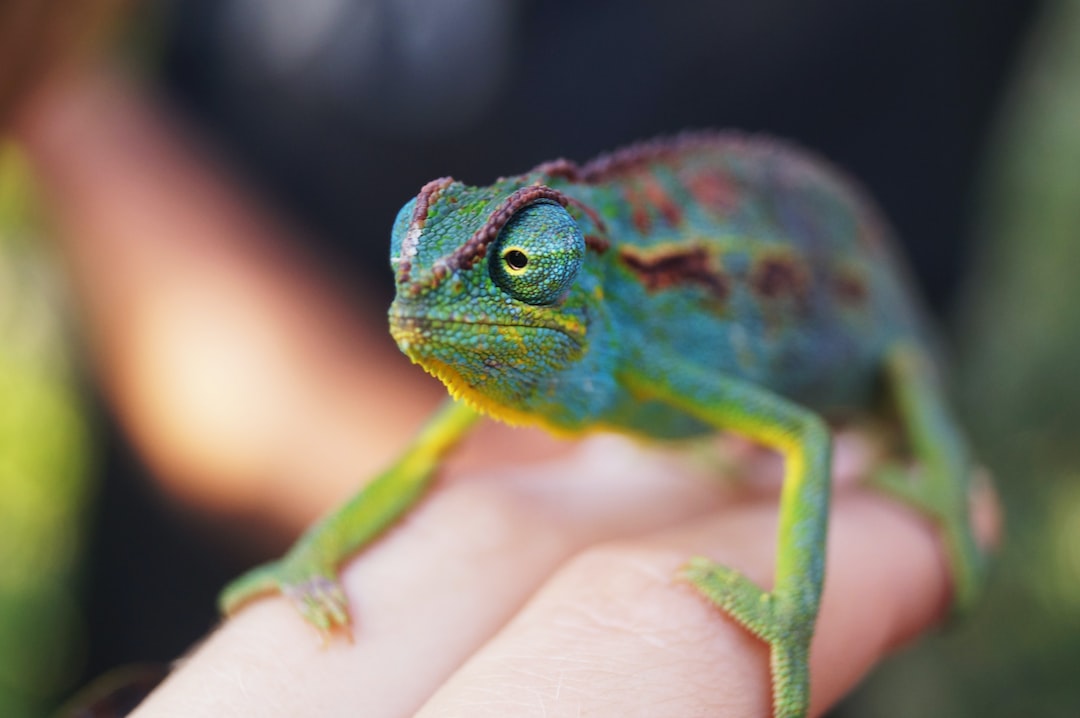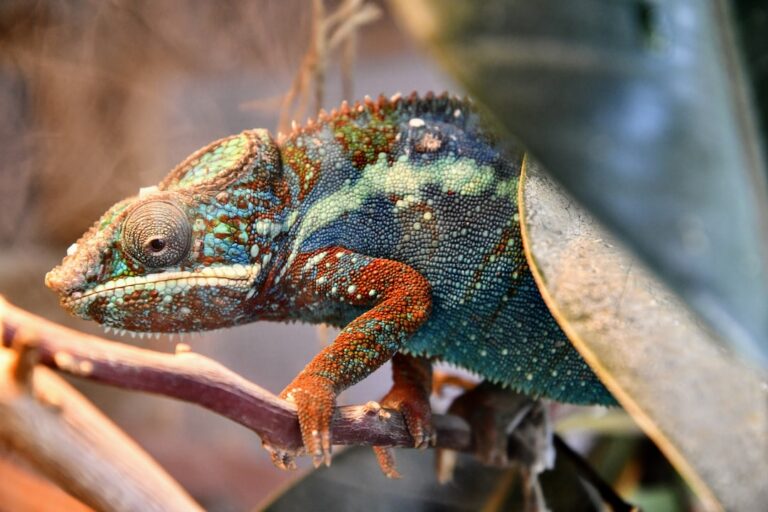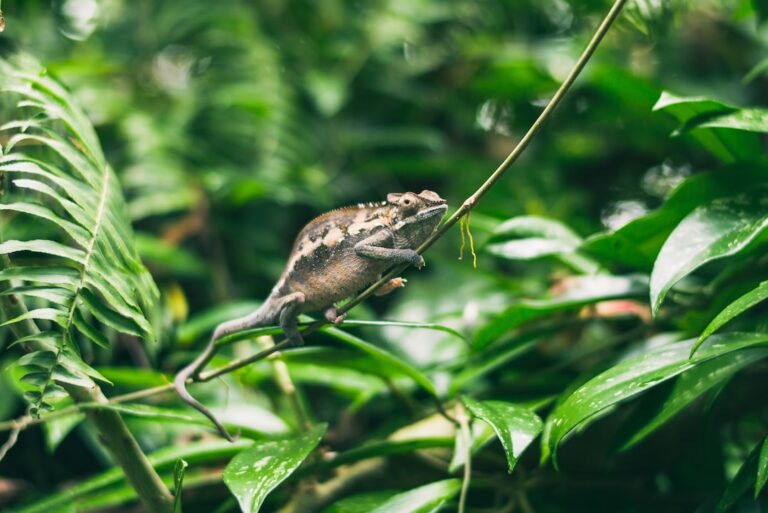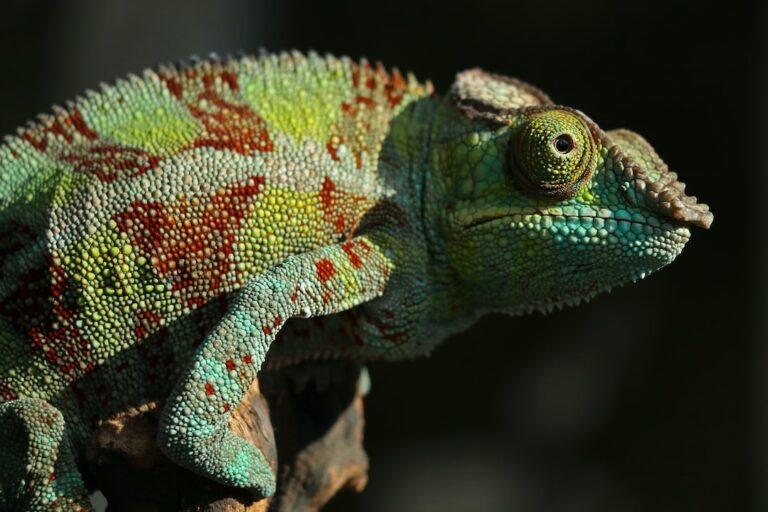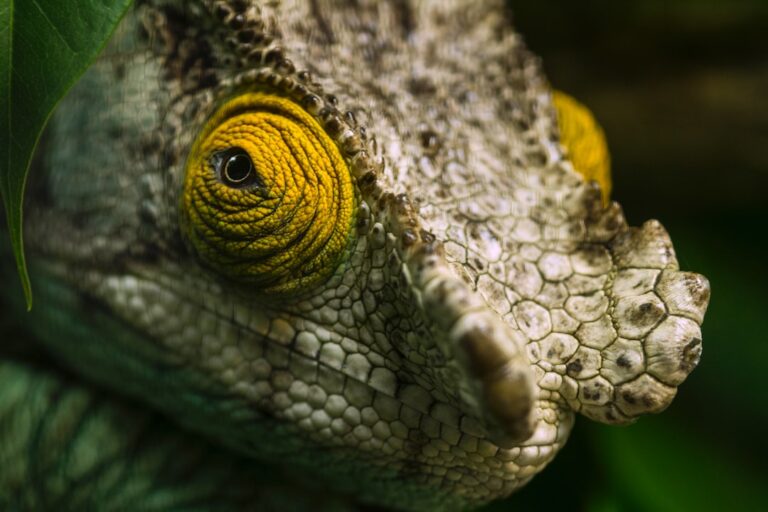Why Do Chameleons’ Chins Puff Up?
Chameleons are fascinating creatures known for their ability to change color and their unique eyes. They belong to the family Chamaeleonidae and are found in various parts of the world, including Africa, Madagascar, and parts of Asia and Europe. Chameleons are known for their distinctive physical characteristics, such as their long tongues, prehensile tails, and zygodactylous feet (meaning they have two toes pointing forward and two toes pointing backward).
One of the most remarkable features of chameleons is their ability to change color. This is not just for camouflage, but also for communication and thermoregulation. Chameleons have specialized cells in their skin called chromatophores, which contain pigments that can expand or contract to create different colors. They can change their color to blend in with their surroundings or to express their emotions.
Another unique feature of chameleons is their eyes. They have independently moving eyes that can rotate and focus on different objects simultaneously. This gives them a 360-degree field of vision, allowing them to spot prey or predators from any direction. Their eyes also have a specialized structure called a tarsal claw, which helps them grip onto branches and climb with ease.
Table of Contents
Understanding the purpose of chameleons’ chins
Chameleons’ chins may seem like a small and insignificant part of their body, but they actually serve an important purpose. The chin is located at the lower part of the head, just below the mouth. It is covered in scales and can be moved independently from the rest of the head.
The chin plays a crucial role in chameleons’ communication with each other. It is used to convey various messages, such as aggression, submission, or courtship. Different species of chameleons have different types of chins, which can vary in size, shape, and color.
The role of chameleons’ chins in communication
Chameleons use their chins to communicate with each other in a variety of ways. One common chin movement is the chin lift, where the chameleon raises its chin upwards. This is often a sign of aggression or dominance, as the chameleon is trying to make itself appear larger and more intimidating.
Another chin movement is the chin tuck, where the chameleon tucks its chin downwards. This is a submissive gesture, indicating that the chameleon is not a threat and is submitting to a more dominant individual.
Chameleons can also use their chins to display courtship behavior. During mating rituals, males will often puff out their chins and display vibrant colors to attract females. This is a way for males to show off their strength and genetic fitness.
How chameleons use their chins to attract mates
Chameleons use their chins to attract potential mates during courtship rituals. Males will often puff out their chins and display vibrant colors to catch the attention of females. The chin puffing behavior is accompanied by other displays, such as head bobbing and body movements.
The color of the chin can also play a role in attracting mates. Some species of chameleons have brightly colored chins, while others have patterns or markings that are unique to their species. These colors and patterns are believed to be signals of genetic fitness and health.
The connection between chameleons’ chins and territorial behavior
Chameleons use their chins to establish and defend their territory. When a male chameleon encounters another male in its territory, it will often display aggressive behavior by puffing out its chin and displaying vibrant colors. This is a way for the male to assert its dominance and warn the intruder to stay away.
The chin puffing behavior is also used to communicate with other males in the area. By displaying their chins and colors, chameleons can establish a hierarchy and avoid unnecessary conflicts. The more dominant males will often have larger chins and more vibrant colors, while subordinate males will have smaller chins and duller colors.
Factors that trigger chameleons’ chin puffing behavior
There are several factors that can trigger chin puffing behavior in chameleons. One of the main triggers is the presence of another chameleon, especially if it is of the same species and gender. Chameleons are territorial animals and will often display aggressive behavior when they feel their territory is being threatened.
Other factors that can trigger chin puffing behavior include changes in environmental conditions, such as temperature or humidity. Chameleons are ectothermic animals, meaning their body temperature is regulated by their environment. When they are exposed to extreme temperatures or other stressful conditions, they may display chin puffing behavior as a way to cope with the situation.
The significance of chameleons’ color change in relation to chin puffing
Chameleons’ color change is closely related to their chin puffing behavior. When a chameleon puffs out its chin, it often accompanies this behavior with a change in color. The vibrant colors are believed to be a way for the chameleon to communicate its intentions and emotions to other individuals.
The colors displayed during chin puffing can vary depending on the species and individual. Some chameleons may display bright and contrasting colors, while others may have more subtle patterns or markings. The specific colors and patterns are believed to be signals of dominance, health, or genetic fitness.
The anatomy of chameleons’ chins and how they work
Chameleons’ chins are made up of a combination of muscles and bones that allow for movement and flexibility. The muscles in the chin are responsible for controlling the movement of the chin, while the bones provide support and structure.
The main muscle involved in chin movement is the geniohyoid muscle, which runs along the underside of the chin. This muscle allows the chameleon to move its chin up and down, as well as side to side. The geniohyoid muscle is connected to the hyoid bone, which acts as a pivot point for chin movement.
The differences in chin puffing behavior between male and female chameleons
There are some differences in chin puffing behavior between male and female chameleons. Males tend to have larger chins and display more aggressive chin puffing behavior compared to females. This is because males are often competing for mates and need to assert their dominance.
Females, on the other hand, may display chin puffing behavior during courtship rituals but it is usually less pronounced compared to males. Female chameleons may also have smaller chins and less vibrant colors compared to males.
Conclusion and the importance of understanding chameleons’ chin puffing behavior
In conclusion, chameleons’ chins play a crucial role in their communication, mating rituals, and territorial behavior. By understanding the different types of chin movements and colors displayed by chameleons, we can gain insight into their behavior and emotions.
Understanding chameleons’ chin puffing behavior is not only fascinating but also important for their welfare and conservation. By studying their behavior in the wild, we can better understand their needs and develop conservation strategies to protect their habitats.
Overall, chameleons are truly remarkable creatures with unique features that make them stand out in the animal kingdom. Their ability to change color and use their chins for communication is just one of the many fascinating aspects of their biology.
If you’re interested in the fascinating world of reptiles, you might also enjoy reading the article “Do Iguanas Eat Rats?” on ReptileFriend.com. This informative piece explores the dietary habits of iguanas and whether or not they consume rats as part of their natural diet. It’s a great read for reptile enthusiasts looking to expand their knowledge beyond chameleons and delve into the eating habits of these intriguing creatures. (source)

